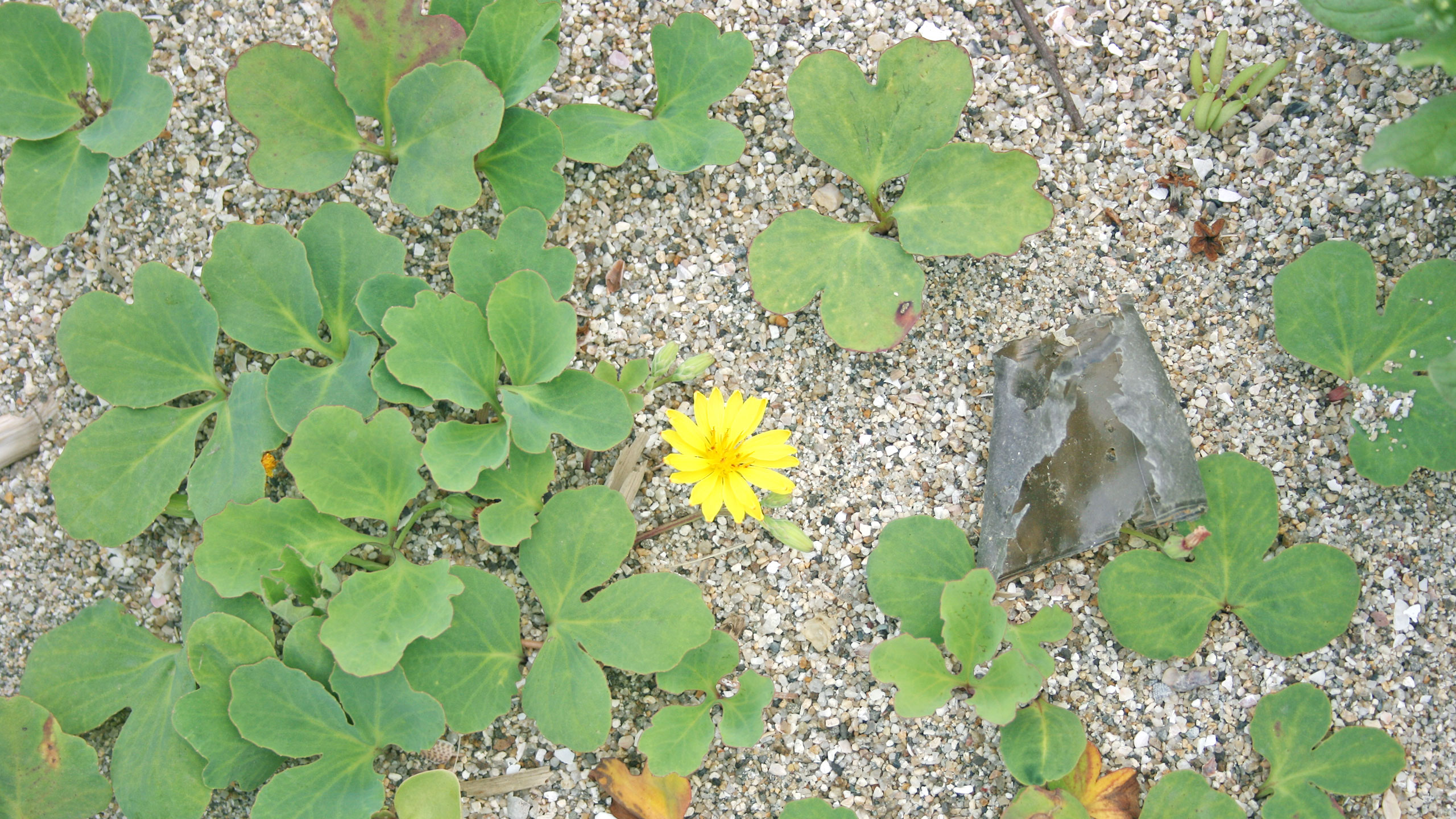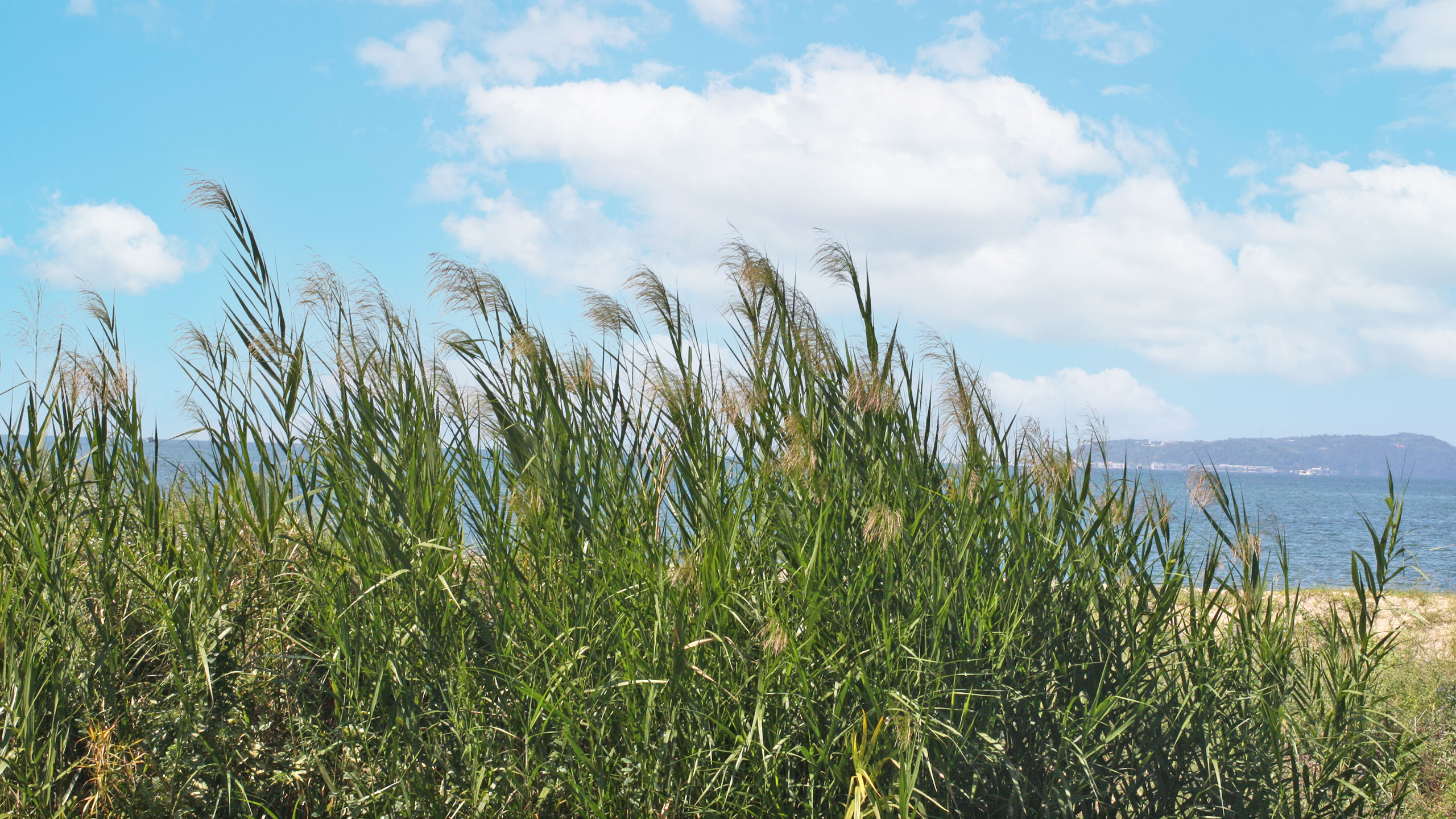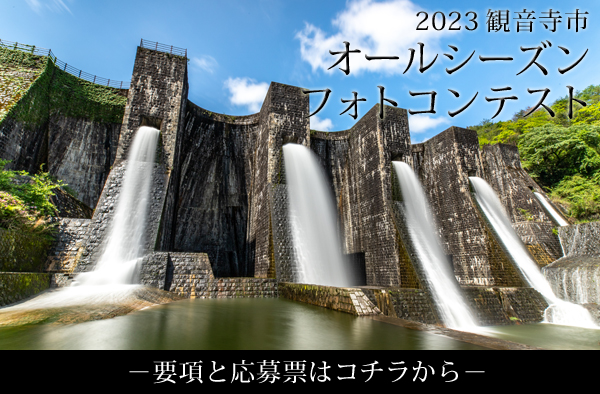Beach plant refers to a plant that blooms on the beach. Ariake Beach is home to many beach plants that change with the seasons. It is good to walk along the beach just looking at them, but it is also recommended to look for them while comparing them with photos. Here we introduce beach plants that are scheduled to bloom in the fall and winter.
Some of the beach plants listed may not be in bloom due to seasonal changes.
- Oenothera grandis
Onagraceae:May-Oct.
Pale yellow flowers. The stems are up to 60 cm long, branching out from the base of the stem and crawling on the sand. It is characterized by blooming in the evening and wilting in the morning.

- Ixeris repens
Compositae:May-Oct.
It bears yellow, clustered, tongue-shaped, capsular flowers 2-3 cm in diameter. The leaves are rather thick and irregularly shaped. Long white underground stems crawl through the sand, and leaves and flowers emerge from the nodes of the underground stems onto the sand.

- Fimbristylis sericea
Cyperaceae:July – September
A perennial herb that grows in sandy coastal areas. Stems and leaves are stiff and densely covered with white hairs. Small ears are attached to the tips of the stems in a head-like shape.

- Paederia scandens var. maritima
Rubiaceae:Aug-Sep
The leaves of the “Saurotomekazura” have been modified so that they are shiny and can live on the beach.
When the leaves, stems, and fruits are rubbed or ground, an odor wafts through the air.
When the leaves, stems, and fruits are rubbed or ground, an odor wafts through the air.

- Linaria japonica
Scrophulariaceae:Aug-Oct
It produces several yellowish-white, mask-like flowers at the tip of the stem. In Kagawa Prefecture, it is found growing naturally only on Ariake Beach. Due to environmental changes, its self-propagation is in danger.

- Phragmites karka
Poaceae:Aug-Oct
It is named after the West Lake in China where it used to grow.
It is a large perennial herb that is also called “seitakayoshi” because it is slightly larger than reed.
It is a large perennial herb that is also called “seitakayoshi” because it is slightly larger than reed.

- Rhizopogon roseolus
Rhizopogonaceae:Jan-Mar
This mushroom grows in the sand at the base of black pine trees. It has been found growing wild in only a few places in Japan. Although it is not a beach plant, it has recently been called a “phantom mushroom".

Native habitat of beach plants
| map |
|---|































